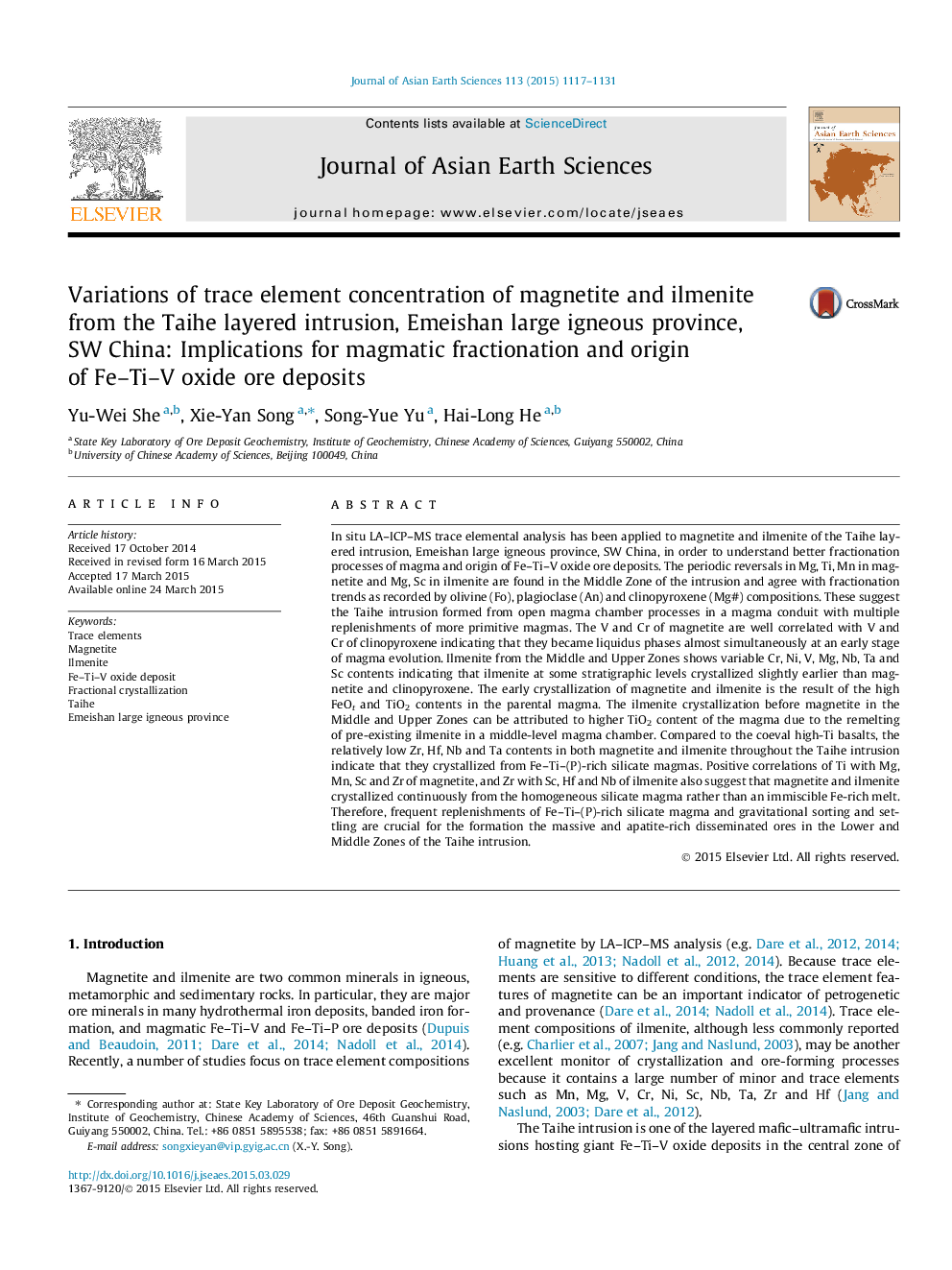| کد مقاله | کد نشریه | سال انتشار | مقاله انگلیسی | نسخه تمام متن |
|---|---|---|---|---|
| 4730282 | 1356745 | 2015 | 15 صفحه PDF | دانلود رایگان |

• Magnetite and ilmenite appear simultaneous as cumulus phases together with mafic silicates.
• The early crystallization of magnetite and ilmenite is the result of the high FeOt and TiO2 contents in parental magma.
• Gravitational sorting and settling are crucial for the formation the apatite-rich Fe–Ti oxide ores.
In situ LA–ICP–MS trace elemental analysis has been applied to magnetite and ilmenite of the Taihe layered intrusion, Emeishan large igneous province, SW China, in order to understand better fractionation processes of magma and origin of Fe–Ti–V oxide ore deposits. The periodic reversals in Mg, Ti, Mn in magnetite and Mg, Sc in ilmenite are found in the Middle Zone of the intrusion and agree with fractionation trends as recorded by olivine (Fo), plagioclase (An) and clinopyroxene (Mg#) compositions. These suggest the Taihe intrusion formed from open magma chamber processes in a magma conduit with multiple replenishments of more primitive magmas. The V and Cr of magnetite are well correlated with V and Cr of clinopyroxene indicating that they became liquidus phases almost simultaneously at an early stage of magma evolution. Ilmenite from the Middle and Upper Zones shows variable Cr, Ni, V, Mg, Nb, Ta and Sc contents indicating that ilmenite at some stratigraphic levels crystallized slightly earlier than magnetite and clinopyroxene. The early crystallization of magnetite and ilmenite is the result of the high FeOt and TiO2 contents in the parental magma. The ilmenite crystallization before magnetite in the Middle and Upper Zones can be attributed to higher TiO2 content of the magma due to the remelting of pre-existing ilmenite in a middle-level magma chamber. Compared to the coeval high-Ti basalts, the relatively low Zr, Hf, Nb and Ta contents in both magnetite and ilmenite throughout the Taihe intrusion indicate that they crystallized from Fe–Ti–(P)-rich silicate magmas. Positive correlations of Ti with Mg, Mn, Sc and Zr of magnetite, and Zr with Sc, Hf and Nb of ilmenite also suggest that magnetite and ilmenite crystallized continuously from the homogeneous silicate magma rather than an immiscible Fe-rich melt. Therefore, frequent replenishments of Fe–Ti–(P)-rich silicate magma and gravitational sorting and settling are crucial for the formation the massive and apatite-rich disseminated ores in the Lower and Middle Zones of the Taihe intrusion.
Journal: Journal of Asian Earth Sciences - Volume 113, Part 3, 1 December 2015, Pages 1117–1131